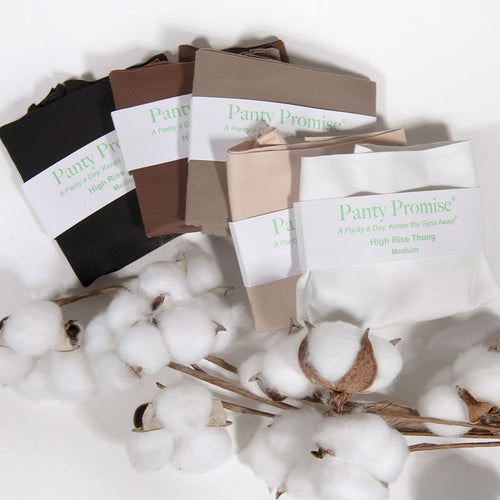Cotton is a magical fabric. Its natural breathability, absorption, and texture allow for utmost comfort and wellbeing. While it’s best to opt for cotton panties, it’s also important to consider the presence of cotton in the hygiene products you use during menstruation. Sanitary pads and tampons are often made of synthetic materials and powders that are meant to increase their performance. However, these synthetic products can wreak havoc on your vulva and vagina and cause major irritation and vulvitis symptoms such as itching and burning.
Here’s where cotton hygiene products can help. Cotton is naturally extremely absorbent, offering a fresher and much less irritating condition and reducing friction and discomfort. When synthetic pads fail to allow the vulvovaginal area to breathe and increase the potential growth of infectious bacteria, cotton pads help facilitate a natural humidity exchange, promoting breathability.
A 2018 study done at the University of Pavia examined the usage of organic cotton pads and compared their effect on the vaginal environment to that of synthetic pads. The study included 200 women who would use conventional synthetic pads during one menstrual cycle, and then cotton pads during their next cycle. The study found significant reductions in vaginal itching and irritation and skin alterations (such as erythema and edema). Cotton pads also help to reduce allergic risks and harmful frictions. After the experiment, women had have a 95% confidence level when switching to cotton pads.
Consider using organic cotton pads during your next period, and ditch wearing those period panties that embed forever chemicals in them! Remember- cotton is the only fabric that has been published in medical journals for everyday feminine wellness that is trusted by gynecologists.
🔍The Toxic Truth Behind Period Panties🔍
-
Chemical Cocktail: Many period panties are saturated with a cocktail of chemicals from dyes, fragrances, and other treatments. These aren't just any chemicals; they include known endocrine disruptors like phthalates and BPA. Imagine wearing these next to your most sensitive area!
-
Synthetic Fibers – A Breeding Ground for Trouble: Synthetic materials, commonly used in period panties for absorbency, can trap heat and moisture. This creates the perfect breeding ground for yeast and bacteria, significantly upping your risk for infections.
-
The Dark Side of Production: The process of creating some of these textiles involves toxic substances. Did you know that non-organic cotton might be treated with harmful pesticides, while synthetics can pollute our environment?
-
Environmental Havoc: Synthetic fabrics aren’t just a health hazard; they're an environmental nightmare too. They take ages to decompose, and their production is often resource-heavy and polluting.
-
Regulatory Gaps: Shockingly, the intimate apparel industry is not tightly regulated. This means you might not even know what harmful substances you're exposing your body to.
-
Infection Risks: Improper use and cleaning of these panties can lead to bacterial and fungal infections. It’s not just discomfort; it’s a serious health risk!
🌿Why Cotton is the friend for Your Intimate Health Needs🌿
In the midst of these alarming revelations, there's a hero that stands out: Cotton Tampons and Sanitary Pads.
- Breathability: Cotton allows your skin to breathe, reducing moisture buildup, and thereby decreasing the risk of infections.
- Natural & Gentle: Being natural, cotton is far gentler on your skin. No harsh chemicals mean less risk of irritation and allergic reactions.
- Environmentally Friendly: Cotton is biodegradable and less taxing on our planet, especially if it's organic.
- Healthier Choice: Cotton’s natural properties make it a safer choice, especially for something in close contact with your intimate areas.

 Women's Underwear
Women's Underwear
 Panty Packs
Panty Packs
 Monthly Boxes
Monthly Boxes

